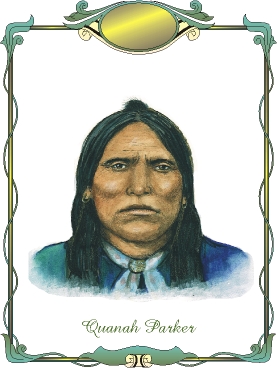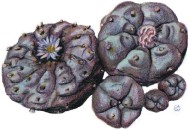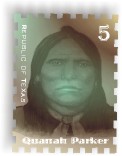
Re: diagnosis by trapper/kcmo ..... Ask Trapper
Date: 5/28/2015 10:43:23 PM ( 9 y ago)
Hits: 1,943
URL: https://www.curezone.org/forums/fm.asp?i=2256170
0 of 0 (0%) readers agree with this message. Hide votes What is this?
this would be cool if not for living in a mickey mouse nation:
http://www.stainblue.com/quanahparker.html

Quanah Parker, born ca. 1845 in Oklahoma, was chief of the Quahadi Comanches, the last band to surrender in the South Plains war of 1874-1875. His father Peta Nocona was a revered war chief of the Nocone Comanches. His mother Cynthia was a white woman who as a child had been captured by the Comanches on May 19, 1836, at Fort Parker, in Limestone County, Texas.
Parker was influential in the spread of Christian peyotism among the Plains Indians. He was the first to integrate highly ritualized Christian elements with the Indians' traditional use of peyote, and insisted that women not be excluded from such ceremonies. The town of Quanah, Texas -- settled in 1884 and named for Quanah Parker -- is the seat of Hardeman County, in North Texas.
Today, bona fide religious use of peyote by such organizations as the Native American Church continues and is protected by the Fourteenth Amendment of the U.S. Constitution as well as several sections of the Arizona Constitution pursuant to Arizona State Judge Yale McFate's July 26, 1960 ruling. States permitting the religious use of peyote include Texas, Kansas, Oklahoma, New Mexico, Arizona, Colorado, Utah, Minnesota and Nevada, among others.

Peyote, Cactus Pudding, Dry Whiskey and White Mule are some of the common names given this sacred cactus that contains more than fifty alkaloids and related compounds. Mescaline (3,4,5-trimethoxy-beta-phenethylamine) is structurally similar to the human neurohormone epinephrine and is the primary active constituent of peyote. It produces the indescribable, brilliantly colored visions that are the hallmark of the peyote experience. Aldous Huxley's book, The Doors of Perception, vividly describes his experience while under the influence of mescaline and was an important milestone in the history of psychedelics.

Once common throughout its range in Texas (Starr, Hidalgo, and Zapata counties), peyote is now a rare plant due to overcollecting. A substantial population still survives in Mexico's Chihuahuan Desert. Cultivating peyote is a rewarding experience but requires great patience: If started from seed, it can take up to five years to obtain a plant that is 15 mm in diameter. "Pups," or lateral shoots arising from lateral areoles, can be removed and allowed to callus, and then planted in moist sand or a sand/vermiculite mixture where they will quickly form adventitious roots.
Anderson, E.F. "The biogeography, ecology and taxonomy of Lophophora (Cactaceae)." Brittonia 21(4): 299-310 (1969).
Anderson, E.F. Peyote: The Divine Cactus. University of Arizona Press, Tucson, AZ (1980).
Anderson, E.F. "The peyote gardens of south Texas: A conservation crisis?" Cactus & Succulent Journal 67(2): 67-73 (1995).
Huxley, A. The Doors of Perception. Harper, New York (1954).
La Barre, W. The Peyote Cult. Yale University Press, New Haven, CT (1938).
La Barre, W. "Mescalism and peyotism." American Anthropologist 59: 708-711 (1957).
La Barre, W. "Twenty years of peyote studies." Current Anthropology 1: 45-60 (1960).
La Barre, W. "Peyotl and mescaline." Journal of Psychedelic Drugs 11(1-2): 33-39 (1979).
La Barre, W. et al. "Statement on peyote." Science 114: 582-583 (1951).
Schultes, R.E. and A. Hofmann. The Botany and Chemistry of Hallucinogens. Charles C. Thomas, Springfield, IL (1973).
Shulgin, A. "Mescaline: The chemistry and pharmacology of its analogs." Lloydia 36(1): 46-58 (1973).
Shulgin, A. "Profiles of psychedelic drugs. 7. Mescaline." Journal of Psychedelic Drugs 11(4): 355 (1979).
Copyright © 1996-2000 Stain Blue Press

<< Return to the standard message view
fetched in 0.03 sec, referred by http://www.curezone.org/forums/fmp.asp?i=2256170